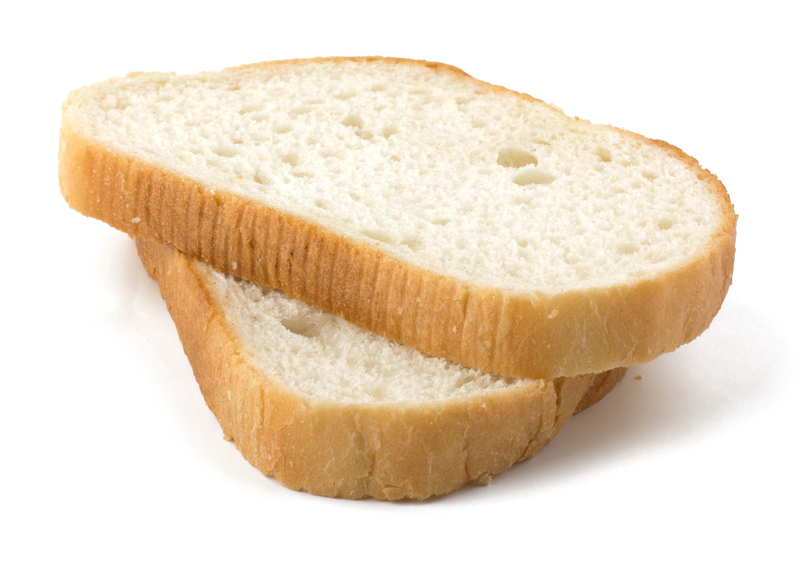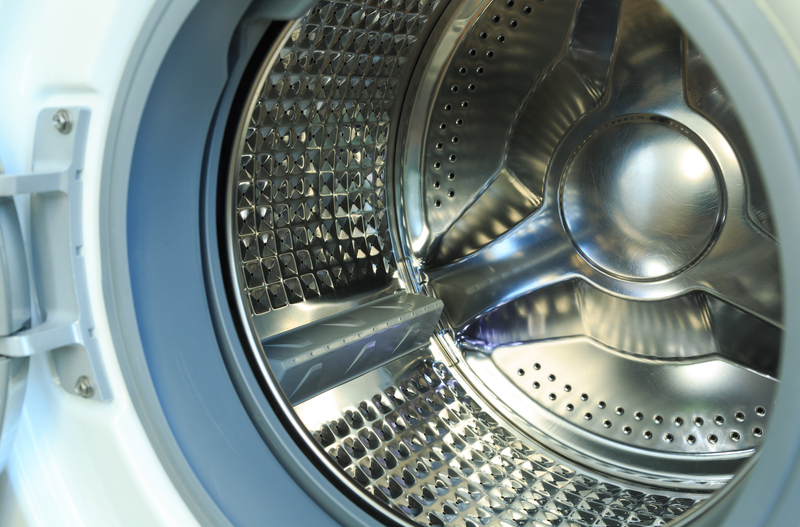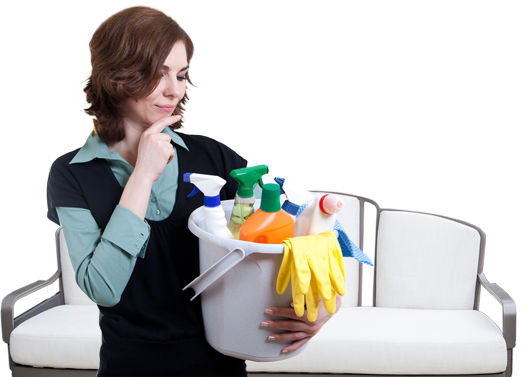Transform Your Stovetop with Simple Burn Residue Cleaning Techniques
Posted on 18/05/2025
Transform Your Stovetop with Simple Burn Residue Cleaning Techniques
Is your once sparkling stove now marred by stubborn scorch marks and dull patches of burned residue? You're not alone! Daily cooking can leave even the most pristine stovetops looking worn. The good news is, transforming your stovetop doesn't require expensive tools or harsh chemicals. With simple, effective burn residue cleaning techniques, you can restore shine, prevent future buildup, and keep your kitchen looking its best.
Why Burn Residue Builds Up on Your Stovetop
Before diving into stovetop cleaning techniques, it helps to understand why burn residue forms in the first place. Common reasons include:
- Spilled food or liquid that isn't wiped up immediately
- Cooking over high heat, which can scorch food onto the surface
- Grease splatters that harden and adhere strongly
- Daily use without regular cleaning, allowing residue to accumulate
Left unchecked, these residues can permanently discolor your stovetop, compromise its performance, and even produce smoky odors. Thankfully, the solutions are easier than you think!

Essential Tools and Ingredients for Stove Cleaning
Transforming your stove starts with gathering the right supplies. Most you'll find already in your kitchen or local grocery store:
- Baking soda: A gentle abrasive that lifts stains without scratching.
- White vinegar: Cuts through grease and leaves surfaces gleaming.
- Lemon juice: Natural degreaser with a fresh scent.
- Dish soap: Effective at breaking down grime and residue.
- Microfiber cloths: Absorbent and non-abrasive for safe cleaning.
- Plastic scraper or old credit card: For removing stubborn, stuck-on residue.
- Soft scrubbing brush: Helps work cleaning agents into burns and stains.
- Paper towels or sponges: For wiping surfaces.
Step-by-Step Burn Residue Cleaning Techniques
1. Basic Daily Maintenance
Preventing burn residue buildup begins with a quick daily cleaning routine. Here's what you should do after every use:
- Let the stove cool completely.
- Wipe surfaces with a damp microfiber cloth to remove loose crumbs or light spills.
- For greasy spots, add a small drop of dish soap to your cloth, then rinse with water.
- Dry with a clean towel to prevent water spots and streaks.
Maintaining this simple ritual will drastically reduce the need for deep cleaning later on.
2. Deep Cleaning Stubborn Burn Residue
When simple wiping isn't enough, try this deep-cleaning process using natural ingredients:
Step 1: Loosen the Burned-On Residue- Sprinkle a generous amount of baking soda on the affected area.
- Spray or drizzle white vinegar over the baking soda. Let it fizz for at least 10-15 minutes.
- Alternatively, use a half lemon dipped in salt for acid and abrasion combined.
- Using a soft-bristled brush or damp sponge, scrub the residue gently in circular motions.
- For stubborn patches, lightly scrape with a plastic scraper or old credit card. Never use metal--they'll scratch the surface!
- Wipe away residue with a damp microfiber cloth.
- Repeat the process as needed until the stains lift.
- Buff the surface dry for added shine.
3. Cleaning Different Types of Stovetops
Modern kitchens feature various stovetops, each with specific cleaning needs. Here's how to clean burn residue from the most common surfaces:
Gas Stovetops
- Burner Grates: Remove and soak in hot, soapy water for 15-20 minutes. Use a stiff brush for stuck-on debris. Rinse and dry thoroughly.
- Stove Surface: Use the baking soda and vinegar method above. Be careful around igniters and gas ports--avoid oversaturation.
Electric Coil Stoves
- Coils: Unplug (or turn off power) and lift coils out. Wipe with a damp cloth and mild detergent. Allow to dry completely before reattaching.
- Drip Pans: Remove and soak, then scrub as you would grates.
Glass and Ceramic Stovetops
- Surface Cleaning: Always use non-abrasive sponges and cleaners approved for glass or ceramic. For burnt-on residue, a paste of baking soda and water left to sit for 15 minutes can work wonders.
- For hard-to-remove scorch marks, use a specialty razor blade scraper held at a 45-degree angle (check manufacturer guidelines).
Preventing Future Burn Residue on Your Stove
Once your stove is gleaming like new, you'll want to keep it that way. Try these expert tips to prevent residue and ease future cleaning:
- Wipe Spills Immediately: Clean up accidents as soon as it's safe. The longer they sit, the more likely they'll burn onto your stovetop.
- Use Proper Cookware: Avoid pots and pans that leak, and invest in quality cookware that distributes heat evenly to reduce scorching.
- Apply a Protective Coating: For glass tops, a dab of cooktop cleaner or polish creates a barrier against future spills.
- Regular Light Cleaning: Make it a habit to do a quick wipe-down after each meal prep session.
- Deep Clean Weekly: Even if your stovetop looks clean, set a weekly schedule to tackle hidden grease and grime buildup.
Homemade Stove Cleaning Solutions
While there are plenty of commercial stovetop cleaners, many households prefer safe, eco-friendly recipes you can mix up at home. These solutions not only break down burn residue but are also budget-friendly and gentle on surfaces.
Baking Soda & Vinegar Cleaner
- Ingredients: 1/2 cup baking soda, 1/4 cup white vinegar, enough water to make a paste.
- Instructions: Mix into a spreadable paste and apply to scorched areas. Let sit for 10-20 minutes, then scrub and wipe clean.
Lemon & Salt Scrub
- Ingredients: Half a lemon, 2 tablespoons coarse salt.
- Instructions: Dip the cut side of the lemon in salt, then rub directly on burn marks. Rinse and wipe dry.
Natural Degreaser Spray
- Ingredients: 1 cup water, 2 tablespoons white vinegar, 2 drops mild dish soap.
- Instructions: Mix in a spray bottle. Spritz onto surface as a daily quick-cleaner, then wipe clean.
Common Mistakes to Avoid When Cleaning Burn Residue
Some burn residue removal mistakes can cause more harm than good. Watch out for these missteps:
- Using abrasive pads or steel wool: These can scratch and dull your stovetop, especially glass or enamel surfaces.
- Applying harsh chemicals: Ammonia, chlorine, or bleach may discolor or damage finishes and leave harmful fumes.
- Cleaning while hot: Wait until the stove cools completely to avoid burns and poor cleaning results.
- Saturating controls or igniters: Excess moisture can penetrate electrical components and cause malfunctions.
- Skipping regular maintenance: Sporadic cleaning allows more residue to bake on, making future cleaning more difficult.
Expert Tips for Extra-Stubborn Burn Residue
If regular burn residue cleaning techniques aren't enough, professional cleaners have a few secret tricks:
- Steam it! Place a hot, damp towel over stuck residue for 10 minutes to loosen the grime before scrubbing.
- Use commercial cooktop cleaner: Specialized creams or powders (look for those labeled for glass, ceramic, or enamel) can give a serious boost for tough stains.
- Try a magic eraser: These spongy pads work wonders on both glass and enamel, but always test a small area first.
- Call in the pros: If residue has become carbonized or has pitted the surface, professional restoration may be needed.
Restoring Shine and Final Touches
After you've banished burnt-on messes, add the finishing touch to transform your stovetop into a centerpiece once again:
- Polish glass or ceramic: Use a few drops of vinegar on a microfiber cloth, buffing in small circles for a streak-free finish.
- Condition enamel: A small amount of olive oil on a dry cloth restores luster and provides a protective layer.
- Deodorize: Leave a bowl of baking soda nearby to absorb odors after cleaning burned food residues.

Frequently Asked Questions about Stovetop Burn Residue Cleaning
How often should I deep clean my stovetop?
Ideally, perform a thorough deep clean at least once a week, or whenever you notice more than mild spotting. Regular quick wipe-downs are encouraged after every use.
Is it safe to use a razor blade on glass cooktops?
Used properly (held flat at a 45-degree angle), a razor blade can safely remove stubborn burn residue from glass cooktops. Always check your manufacturer's cleaning recommendations first.
What if burn marks won't come off?
Some old carbonized stains may never fully disappear. Consistent gentle cleaning can fade them, but avoid aggressive scrubbing, which can damage the surface. For severe cases, consider consulting a professional.
Conclusion: Enjoy a Gleaming, Residue-Free Stovetop
A brilliant, residue-free stovetop enhances your kitchen's looks and makes every meal more enjoyable. With the simple, natural methods detailed above, transforming your stovetop is easy and affordable. Stick to regular cleaning routines, use the right burn residue cleaning techniques, and your stove will remain a sparkling centerpiece for years to come.
Let these tips empower you to keep your kitchen shining. Happy cleaning--and happy cooking!





